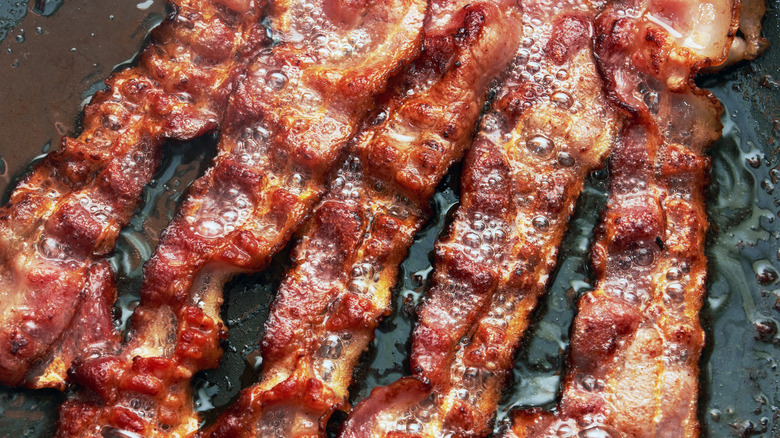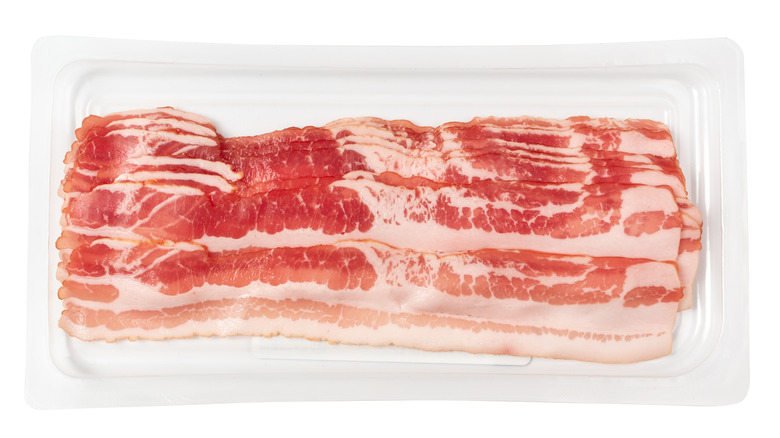How To Strain Bacon Fat For The Longest Possible Use
Americans love bacon; more than 268 million Americans said they enjoy the savory treat, according to a 2020 Statista report. To boot, a survey of 1,000 Americans conducted by National Today found that just 4% of respondents said they don't like bacon and that over a fifth would eat bacon every day given the option. If you're among the millions of bacon lovers out there, you know it's a gift that keeps on giving. That gift — besides the bacon itself, obviously — is bacon fat, which can be used to season all sorts of dishes, from roasted vegetables to popcorn.
If preparing bacon on the stovetop, the slow and steady approach is best for frying your bacon, and this is also true when it comes to rendering what is referred to as liquid gold in many kitchens. If you fry it up often, you not only are bound to have a favorite cast iron pan for doing so but also likely have a jar of bacon fat close at hand.
Still, if you're a cook as seasoned as that trusty cast iron, you know that straining the crispy bits of bacon from the fat is a must if you plan on keeping it around for any length of time. In fact, the clarified bacon drippings have a shelf life of up to six months to a year, depending on the way you store it.
Straining and storing bacon fat
A standard 12-ounce package of bacon will produce up to 2/3 cups of fat. But if you're in it more for the render than the bacon, look for a particularly streaky product; if this is the case, you'll also want to skip the flavored varieties, such as maple-cured bacon, for a neutral-tasting fat. Despite any country-spun wisdom you may have heard, rendered bacon fat stored at room temperature can turn rancid. And this is especially true if there are particles of bacon in the fat, which is why straining is crucial. Because bacon fat congeals when it cools, it must be strained while relatively hot, which can make it a dicey affair.
Once you've fried your bacon for about 10-12 minutes on low heat — high temperatures will not only burn your bacon, but can make for bitter fat — you can pull out the crispy slices. At this point, you'll be left with hot grease and some bacon bits (perfect for saving for salads or baked potatoes). Carefully pour the grease through a metal sieve (never plastic!) to strain the grease. If a heat-resistant strainer or sieve isn't handy, you can always use a coffee filter or cheesecloth — just tightly secure either around the top of your storage container with perhaps a rubber band to avoid a greasy mess. Once sealed, according to FoodSafety.gov, those strained drippings should last 6 months in the fridge or a full year in the freezer.

